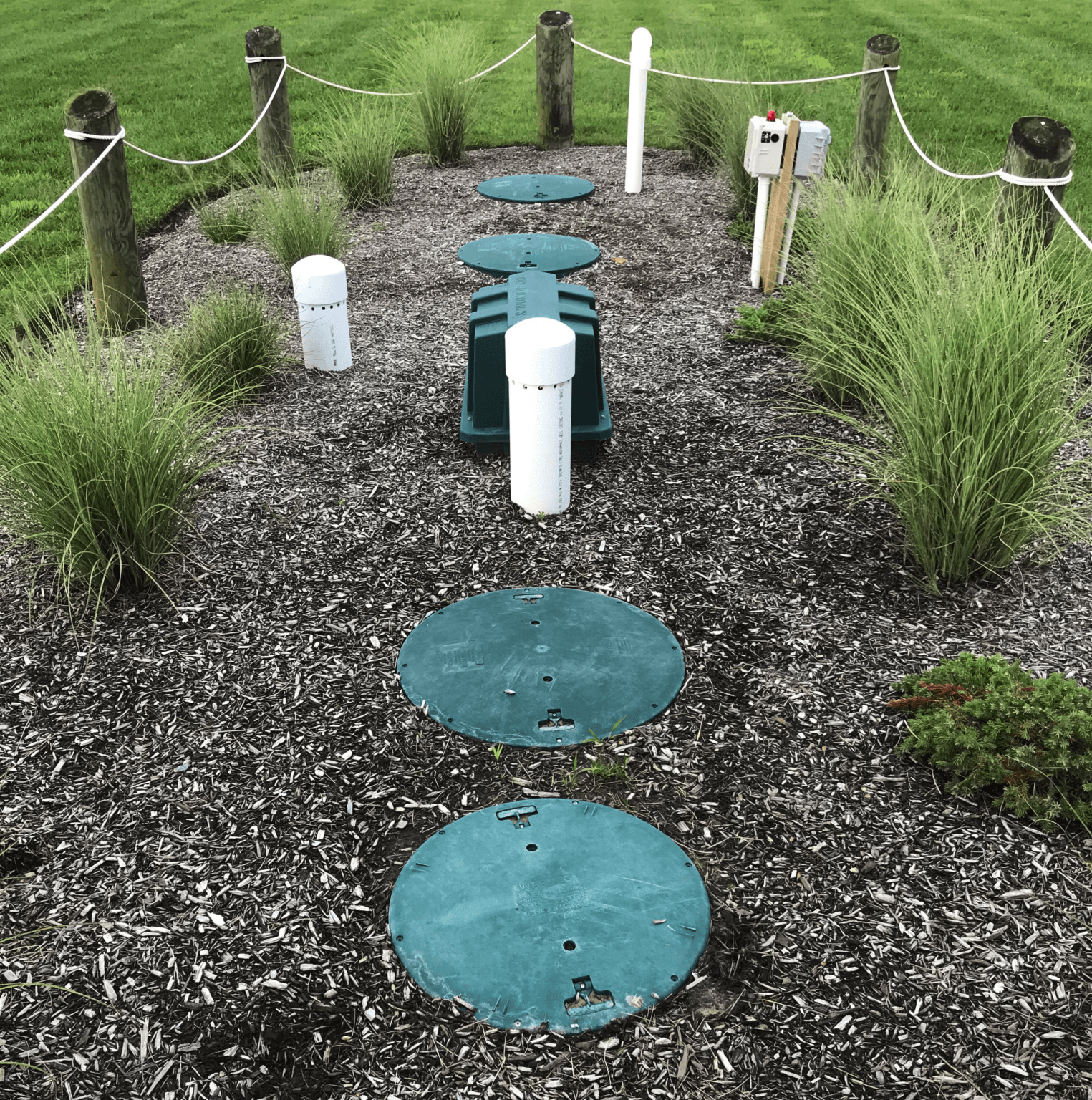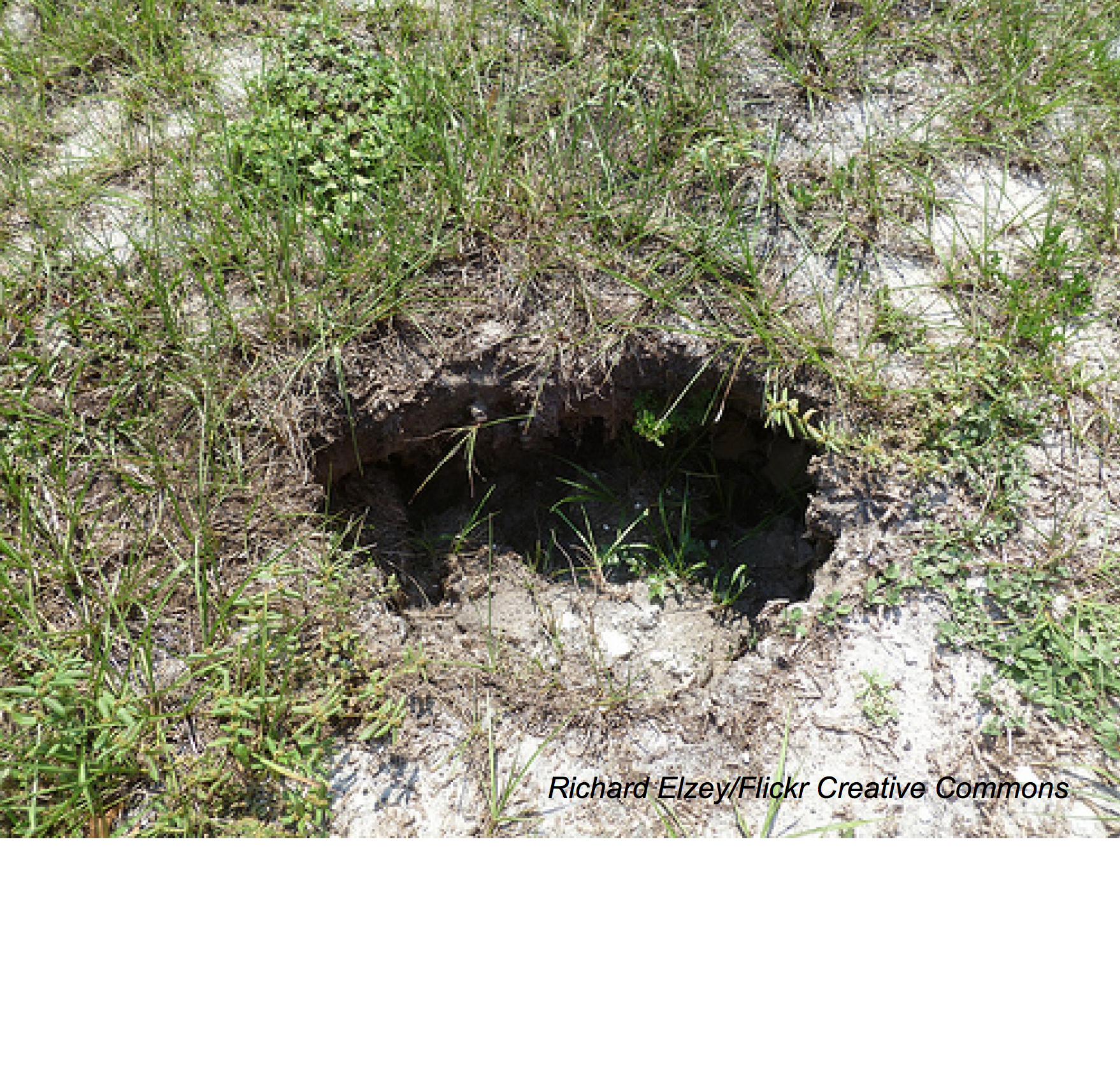Some of the links on this page are “affiliate links.” This means if you click on the link and purchase the item, we will receive an affiliate commission at no extra cost to you. Please visit our Affiliate Disclosure page for more information.
A sinkhole is a hole in the ground that typically appears after water dissolves rock and dirt underneath. You may not have thought of this as a risk in your yard, but if you purchased a house with an existing septic tank, sinkholes are possible. Septic tanks are necessary for many homes, but it is important to make sure they are safe while you use them and when you no longer need them.
A failing or abandoned septic tank can cause a sinkhole if it is left in a state of disrepair for some time. This is one of the reasons that it is important to have your septic inspected and maintained regularly. If you replace your septic tank, you need to properly dispose of or fill in the old one so that there is no future risk.
When you have a septic tank at your home, you need to make sure that you maintain it correctly from when you install it to when it needs to be replaced or abandoned. Continue reading to learn how a septic tank can cause a sinkhole and how to prevent it from happening.
Can a Septic Tank Cause a Sinkhole?
A septic tank can cause a sinkhole if it is in disrepair or has been abandoned. For example, if you see soil sinking around your septic tank, you might have a leak letting the soil get washed into your tank. This can lead to a small sinkhole in your yard. You will not likely fall into one of these little sinkholes, but you can certainly sprain an ankle or even break a leg.
Another more dangerous way that a septic tank can cause a sinkhole is when you are no longer using it. You should never abandon it because over time, it will decay, and it can be pretty dangerous. You need to properly dispose of or fill the old septic tank so that it does not become a hazard.
In this video, Frank from GNC Plumbing LLC shows an example of a sinkhole caused by an old abandoned septic tank. According to him, ‘the code’ does not require filling these old septic tanks. I find this hard to believe, considering the potential danger of family members and pets falling in one of these sinkholes or getting hurt because of them.
How to Handle an Abandoned Septic Tank
There are several ways to dispose of a septic tank that you are no longer using. If you just leave it sitting there, it can become a hazard years down the road and cause a sinkhole. The first way is to remove the tank and dispose of it at an approved site, such as a landfill. You can also crush the tank completely, but you must backfill the area where it was. Another option is to leave the tank where it is, but you need to fill it with some kind of inert material that can’t flow, such as concrete.
Before you dispose of the tank, you must have it emptied completely by a septic company. You also need to make sure that any electric devices for the septic tank are removed as well, and then you can start removing or filling the septic tank.
How to Tell If a Septic Tank Is Failing
There are a number of signs that will let you know if your septic tank is failing. You need to pay attention to them because one of the ways that your septic can cause a sinkhole is by failing. If your septic tank is maintained regularly, you will get many years of use out of it. However, when you don’t maintain it, you can end up with expensive failures that can be very dangerous.
These are some of the signs that could indicate that your septic tank is failing:
- Water and sewage is backing up into the home from toilets, sinks, and drains
- Sinks, bathtubs, and showers are draining slowly
- You have standing water near the septic tank
- You hear gurgling in the plumbing system
- There are bad smells coming from around the septic tank
- The grass around your septic tank is bright green and spongy
- You find algae blooming in lakes and ponds nearby
It is important to call a licensed professional if you notice any of these signs. You can address any issues before they lead to a sinkhole or another expensive failure.
You may want to read about why you can’t have a septic tank under a house.
Final Words
When you have a septic tank, it is important to maintain it properly. If you are no longer using the septic tank, you will need to dispose of it properly to make sure that a sinkhole doesn’t occur in the future. Sinkholes caused by septic tanks can be particularly dangerous, so make sure that you stay on top of your maintenance.
Related Posts:





Good article! I’m in need of a quote for this type of work in my rear yard. The DPW tells us that there is a old septic tank that is no longer being used which has caused a large sink hole in the rear yard. Looking for estimates from I guess Plumbers!
804-301-5300 (Richmond, VA)
Thank you for stopping by! I would think a plumber or perhaps a septic services company should be able to help you with that. I’m sorry that I can’t help you with a quote.
I have holes that have developed above and around my septic area I believe two of them, I do not have any of the other problems as noted in the prior article no smells no back up everything’s working fine just wondering if the sand is going into the tank itself or should I just wait until the tank needs to be emptied because it is a lot of money
We had our septic pumped on Wednesday and by Friday morning the area around the lid had sunk.
Did you ever find out what was wrong with the septic tank, we are now having the same problem
Do you just fill the sink hole with dirt?
I believe the tank can be filled with sand, gravel, or other approved materials to prevent collapse and seal off any potential entry points for animals or insects. But I have never done it, and I am no expert. Maybe an expert can comment with more details.
We are buying a home and the owners just found a sink hole by the old septic tank which is no longer in use. They are going to get it repaired but I would like to know the proper steps to ensure they are doing it right. Any thoughts would help. Would filling it in with gravel help or should it be pumped out first? Thank you!
Hello and thank you for stopping by.
Dealing with a sinkhole can be a complex process, so it’s crucial to ensure it’s addressed correctly. Here’s a simplified step-by-step guide:
Consult a Professional: First, always consult with a geotechnical engineer or a similarly qualified professional. Sinkholes can be dangerous, and dealing with them requires specialized knowledge.
Inspect and Evaluate: A proper inspection should be carried out to understand the extent and cause of the sinkhole. In your case, it might be related to the old septic tank, but it’s essential to verify that there aren’t other contributing factors.
Pump out and Clean (if needed): If the sinkhole has filled with water or if the old septic tank needs to be cleaned out, then yes, pumping it out would be a good first step.
Stabilize the Hole: Once cleaned out, the hole typically needs to be stabilized. This can be done by filling it with a material like gravel, as you suggested, or a flowable fill material. But the specific method depends on the sinkhole’s size and cause.
Monitor: After the sinkhole is filled and repaired, monitor the area. If you notice further ground depression or other signs, reach out to your professional consultant immediately.
Remember, your situation might need a tailored solution, so always work with a professional to make sure the problem is adequately addressed. Also, make sure any repair is well documented. You might need those documents for insurance or if you decide to sell your home in the future.
My tank has been pumped out and I have no plumbing issues or standing water, just discovered a small hole in the center of the leach field. It was installed in 1987. I don’t know if it’s from an animal or what. Any suggestions?